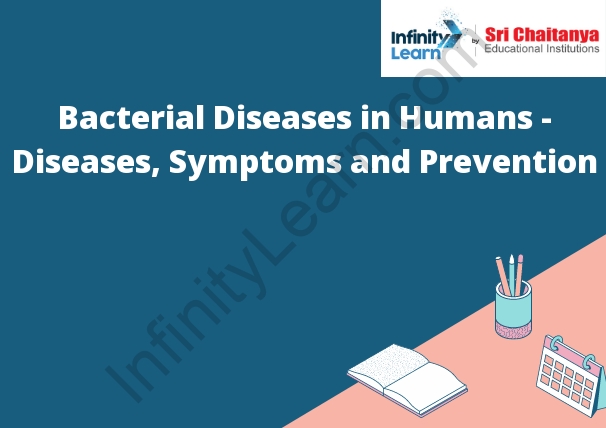Table of Contents
Human Bacterial Diseases
Bacterial diseases are illnesses caused by bacteria. They can range from mild to deadly, and some are easily treated with antibiotics, while others are much harder to cure.
One of the most common bacterial diseases is strep throat, which is caused by the Streptococcus bacteria. It is a highly contagious disease that can be easily treated with antibiotics, but if left untreated it can lead to serious health problems.
Another common bacterial disease is tuberculosis, which is caused by the Mycobacterium tuberculosis bacteria. It is a serious and often deadly disease, and can be difficult to cure.
There are many other bacterial diseases, including but not limited to:
– Legionnaire’s Disease, which is caused by the Legionella bacteria
– E. coli infection, which is caused by the Escherichia coli bacteria
– Salmonella infection, which is caused by the Salmonella bacteria
– Botulism, which is caused by the Clostridium botulinum bacteria

List of Bacterial Diseases in Humans
There are many bacterial diseases that can affect humans. Some of the most common include:
– Tuberculosis: a bacterial infection that affects the lungs
– Streptococcus pneumoniae: a bacterial infection that can cause pneumonia, meningitis, and sepsis
– Salmonella: a bacterial infection that can cause food poisoning, typhoid fever, and paratyphoid fever
– E. coli: a bacterial infection that can cause food poisoning, urinary tract infections, and respiratory illness
– Staphylococcus aureus: a bacterial infection that can cause skin infections, food poisoning, and pneumonia
Causes of Bacterial Diseases
Bacterial diseases are caused by bacteria, which are tiny, single-celled organisms. There are many different types of bacteria, and some can cause diseases in people, animals, and plants.
Bacteria can cause diseases in several ways. Some bacteria produce toxins, which are poisonous chemicals that can make people and animals sick. Other bacteria can invade the body and cause infections. Bacteria can also cause diseases by entering the body through cuts or other openings in the skin.
Symptoms of Bacterial Diseases
Bacteria are single-celled organisms that can cause diseases in humans, animals, and plants. Bacterial diseases are caused by the presence of bacteria in the body and can be spread through contact with an infected person, animal, or object. Symptoms of bacterial diseases vary depending on the type of bacteria that is causing the infection.
Some common symptoms of bacterial diseases include fever, chills, muscle aches, and pain. Other symptoms may include nausea, vomiting, diarrhea, and redness, swelling, and warmth around the site of the infection. In some cases, a bacterial infection can lead to death.
Risk Factors Involved
in the Spread of Infectious Diseases
There are a number of risk factors involved in the spread of infectious diseases. Some of the most common risk factors include:
-Having close contact with someone who is infected
-Not washing your hands regularly
-Touching your nose, mouth, or eyes after you have touched something that is contaminated
-Not getting vaccinated
-Living in a crowded environment
-Traveling to areas where the risk of infection is high
Prevention of Bacterial Infections
Prevention of bacterial infections can be done through many methods. Some methods are more effective than others, and some are more expensive. Some of the most common methods of prevention are hand-washing, vaccinations, and antibiotics.
Hand-washing is one of the most effective methods of prevention. It is cheap, easy to do, and it is something that everyone can do. It is important to wash your hands for at least 20 seconds with soap and water. You should also scrub your hands well, especially under your nails.
Vaccinations are another effective way to prevent bacterial infections. Vaccinations can protect you from many different types of bacteria. Some of the most common bacterial infections that can be prevented with vaccinations are pneumococcal pneumonia, meningococcal meningitis, and Haemophilus influenzae type b (Hib) disease.
Antibiotics are also effective at preventing bacterial infections. However, antibiotics should only be used when they are needed. misuse of antibiotics can lead to the development of antibiotic-resistant bacteria.
Treatment of bacterial disease
There are a variety of antibiotics that can be used to treat bacterial disease. The choice of antibiotic is based on the specific bacteria that is causing the infection. The antibiotic is typically given as an oral medication, but it can also be given intravenously or through a nebulizer.
Bacterial diseases are caused by bacteria, and they can be treated with antibiotics. Antibiotics are drugs that kill bacteria, and they can be used to treat bacterial diseases. Some antibiotics are available over the counter, and others require a prescription from a doctor.
There are many different types of antibiotics, and each one is effective against different types of bacteria. Some antibiotics are used to treat specific types of bacterial diseases, such as tuberculosis, pneumonia, and meningitis. Other antibiotics are used to treat a wide range of bacterial infections, such as urinary tract infections, ear infections, and skin infections.
Antibiotics are usually taken by mouth, but they can also be given intravenously or through a shot. Most antibiotics are effective against bacteria when they are taken in the correct dosage and for the correct length of time. However, some antibiotics can cause side effects, such as nausea, vomiting, and diarrhea.









